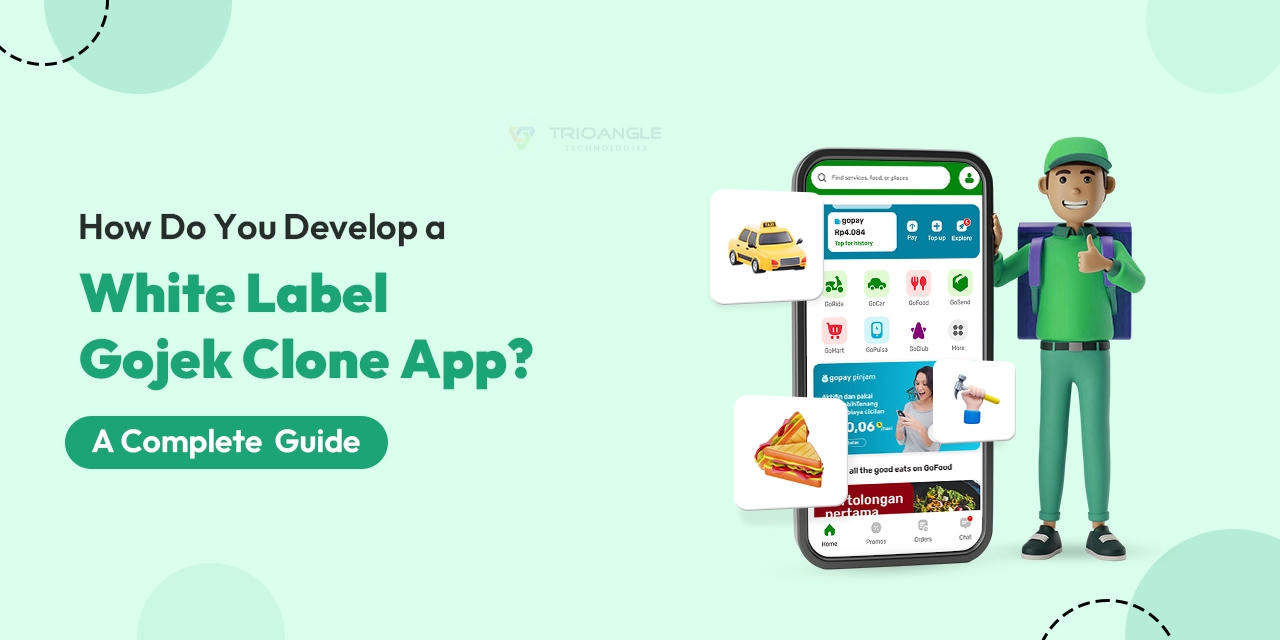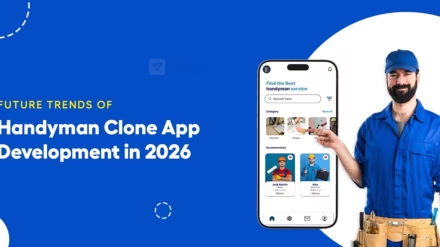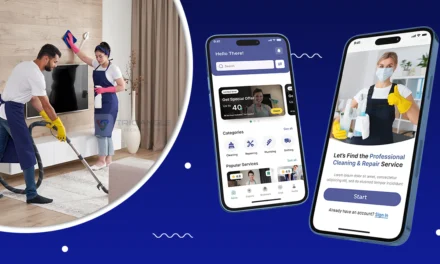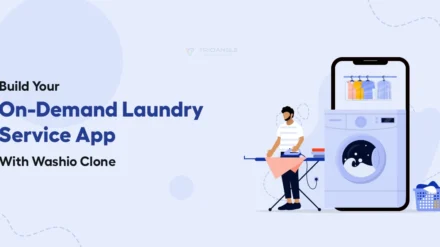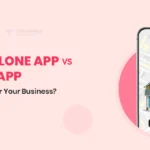Hey! Are you considering expanding your business into the multiservice sector? Well, it’s a great option ✌️, but you don’t know where to start ☹️.
Don’t worry, you have come to the right place 😎.
This blog explores how to build your custom white label Gojek clone app, along with potential cost factors that determine the financial aspects of the app.
Why Opt for a White Label Gojek Clone App?
Gojek clone has been opted for in recent times, and this is due to its faster and more cost-effective way to launch your brand new multi-service business.
This allows for swift market entry along with reduced development costs when compared to building an app from scratch.
This offers various on-demand services that enable the company to customize it with their brand and focus on revenue generation, rather than investing their time in building the app from its ground up.
What are the steps to create your White Label Gojek Clone App?
A step-by-step guide to launch your Gojek clone app is demonstrated as follows,
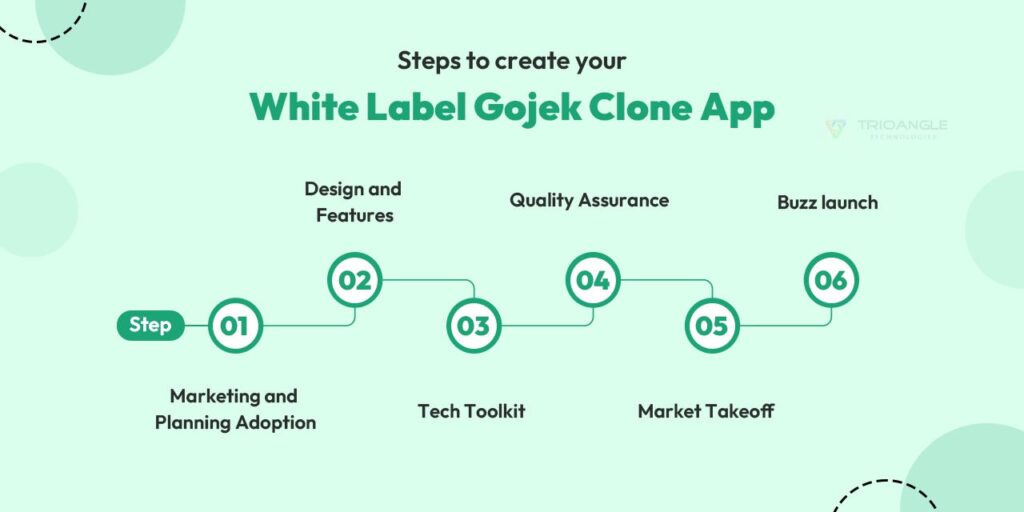
Step 1: Marketing and Planning
Before the development of your research, it is important to conduct an in-depth market research that understands demand gaps, local service trends, and competitive players.
Identify your target audience and map strategies for attracting both users and service providers. Find out what services people use the most and map out how and where competitors fall short, and what customers really want.
So, set clear goals around user growth, app installs, and retention so you can measure real progress once your white label Gojek clone app goes live.
Step 2: Design and Features Adoption
Now comes the interesting and creative part, which is developing the Gojek clone app with suitable features based on your business requirements.
Make sure to design your app, simple yet functional, with the necessary features. It is important not to dump your app with unwanted features that can potentially kill the user experience.
So, design every screen with clarity and flow in mind, be it for customers, service providers, or the admin panel. Some cutting-edge features of white label Gojek clone app are,
- Multi-service support: Different services are listed in the app, like rides, delivery, and home cleaning, from one app. This feature offers convenience and flexibility for users and easy management for businesses.
- Real-time tracking: Track service provider or delivery live within the app, ensuring transparency and timely updates throughout the process.
- AI-based chat assistance: Get instant support and service recommendations via smart AI chat, which responds to user queries 24/7.
- Advanced booking: Schedule services in advance at your preferred time, which allows for better planning and guaranteed availability.
- Multiple payment options: Diverse payment options are incorporated in the Gojek clone app to expand your app to a larger spectrum.
- Multi-language support: Different language support enables the app to reach audiences in different parts of the world.
These are the top features that enhance the performance of white label Gojek clone app.
A smooth experience will keep users coming back, while a clean layout helps build trust and engagement.
Step 3: Tech Toolkit
The tech stack for building a Gojek clone app should be robust and scalable, as this is to support the multi-service operations provided by the app. The toolkit used to build your Gojek clone includes,
- React Native or Flutter for cross-platform
- Kotlin for Android mobile app development & Swift for iOS development
- Laravel or Node.js for backend operations
- MongoDB or PostgreSQL for data storage
- GCP, Amazon Web Services, Azure for cloud storage
- Third-party platforms like Stripe, PayPal, and Google Maps are used
Using these advanced and necessary tech stacks, your White label Gojek Clone is built.
Step 4: Quality Assurance
Once you have built your Gojek clone app using cutting-edge technology, it is high time to test it. Test it using different test cases, like performance testing.
Testing a Gojek clone is crucial to identifying and fixing any possible bugs before its app launch, ensuring a smooth, reliable user experience for all its multi-service features.
- Compatibility testing: This ensures that the app works across different devices and platforms.
- Functional testing: This confirms that each app feature works as specified in the business requirements.
- Usability testing: This testing evaluates how easy and intuitive the app is to navigate for both customers and service providers.
- Integration testing: Confirm that all services and important features like payment gateways, work together seamlessly.
- Security testing: Verify that user data, especially payment information, is protected from unauthorized access and breaches.
So, testing your app guarantees that core functionalities, security, and performance are sound, preventing any possible malfunctions in the app.
Step 5: Market Takeoff
What are you waiting for? Go live! ⚡
Okay! Now everything is sorted, and it’s time to launch your White label Gojek clone into this world.
You can launch your Gojek clone on any platform, like the Google Play Store or Apple App Store, ensuring your servers are configured to handle user traffic.
Step 6: Buzz launch
Want to reach your app wider, promote harder!
After the app is launched in the respective store, create buzz around the tech world and promote it wider audience.
You can also promote it on different social media platforms like Instagram, Facebook, LinkedIn, or other apps. The better you promote your app, the better it reaches the audience.
By following these steps, you can build your dream custom Gojek clone app easily.
So far, we have seen the step-by-step process of building a white-label Gojek clone app, but it is essential to understand the key cost factors that actually influence building an app like Gojek.
Let’s discuss this in the upcoming section.
What are the Cost factors to build an App like Gojek?
Variables that determine the cost of building a white label Gojek clone are listed as follows,
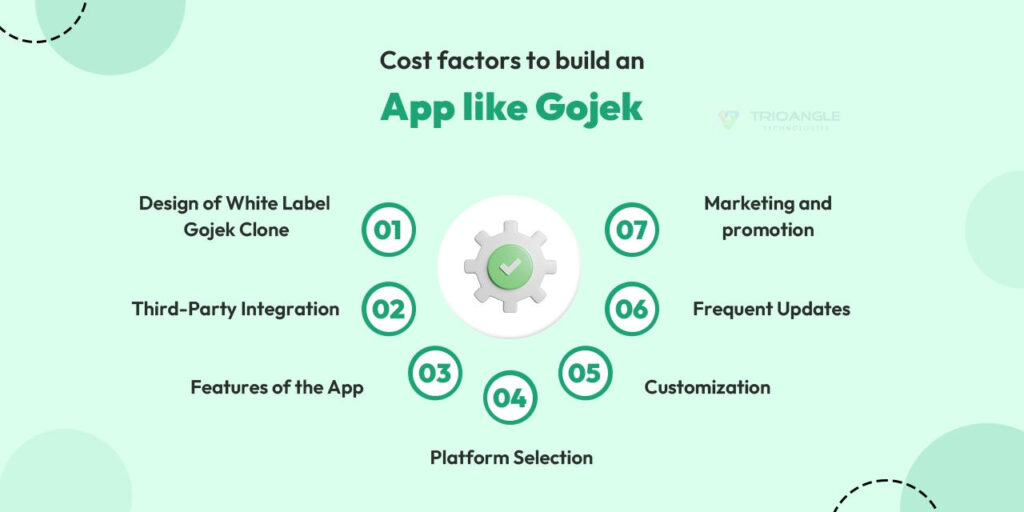
✅ Design of White Label Gojek Clone
A compelling UI/UX design defines how users interact with the app. Creating a clean and intuitive user interface that aligns with your brand requires highly skilled designers.
Highly customized UI/UX with animations, tailored workflows, and user-friendly screens involves longer design cycles and iteration phases. While basic templates can lower upfront costs, high-quality design requires better investment.
✅ Third-Party Integration
Third-party integrations are a significant cost factor in a Gojek clone app, with the payment gateway and other API integrations.
The overall cost increases with the number of services you integrate within the app, like mapping or SMS services.
✅ Features of the App
The cost to develop a white label Gojek clone app primarily relies on the features included and their complexity. Basic apps with essential services such as ride-hailing, delivery, and other services are pretty affordable.
However, the incorporation of advanced features like AI-based recommendations, in-app wallet, blockchain technology, third-party gateway, and multiple integrated services increases development time and effort.
The more custom workflows and third-party API integrations result in a high cost. A feature-rich app naturally demands more testing and maintenance, which also adds to costs.
So, building a white-label Gojek clone app depends heavily on the features included and their complexity.
✅ Platform Selection
Deciding whether to launch the app on iOS, Android, or both platforms significantly affects costs.
In most cases, building platforms simultaneously requires building separate naive apps or using cross-platform frameworks, which can amplify development hours.
So, single-platform launches reduce initial costs but can limit your market reach early on. Also, each platform has different submission and maintenance requirements, impacting long-term budgeting.
✅ Customization
Depending on the business platform’s ideology and vision & mission of the platform, customization of the app changes.
To add custom features to a Gojek clone app, the cost varies significantly based on complexity, ranging from minor updates for a few thousand dollars to extensive custom development that can cost over $100,000.
This is because customization involves more than simple branding, affecting different aspects of the app
✅ Frequent Updates
You cannot leave the app as such after its launch. It is important to scrutinize the app and keep it secure, bug-free, and compatible with new devices and OS versions.
Continuous updates typically involve adding new features or improving the existing ones, depending on the user feedback.
This relentless effort sustains user engagement and business growth, but adds to your expense list. Ignoring maintenance can eventually result in app performance issues and lead to the failure of retaining users.
✅ Marketing and promotion
Marketing your white label Gojek clone is essential to attract customers across the world and to build a strong community.
Campaigns on social media, influencer partnerships, and digital ads costs are added. Hosting fees, depending on the number of users and data handled, cover server costs and scaling infrastructure to ensure smooth app performance.
⚡ Your Vision + Trioangle = Dream Gojek Clone App
I believe you will gain significant insights into building and launching your powerful white label Gojek clone app after reading this blog.
Follow these key steps to build your white label Gojek clone app effectively, starting with strong market research and promoting your app worldwide. But don’t forget the cost to build your app, as proper financial investment is key.
All the best on your journey!
Contact Trioangle to convert your dream into a reality
Reach Out ☎️
